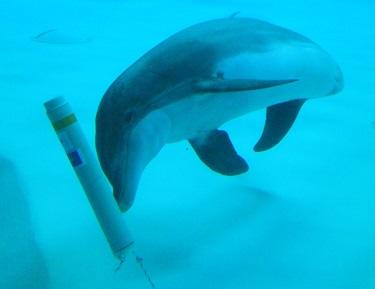Conclusion

When first applying the CPODs as enrichment devices in the water column, the dolphins displayed a range of behaviour patterns when investigating the devices, but soon habituated to the devices fairly quickly, probably because they soon became a static part of the environment. This also became clear in the echolocation recordings from the later introduced PCLs, where the number of clicks recorded were found to decline weekly, and the number of clicks recorded during the 3rd week proved to be significantly lower than those recorded during the first week. After this 3rd week the number of clicks recorded per hour levelled at around a mean of 5000 per PCL. Changing the look and acoustic properties of the devices resulted in regained exploratory and play behaviours apparently because of the novelty properties. The echolocation patterns seen throughout the day showed a clear diel pattern, with a lot of echolocation activity recorded from midnight to early morning, decreasing throughout the day, and reaching the lowest level after the trainers leave at the end of the day until midnight. This pattern is verified in both the PCL and CPOD recordings. Based on this low echolocation activity, it is suggested that the dolphins were mainly resting from 17.00 and until 00.00. During day-time resting they were often seen swimming in small groups in a clockwise circular pattern. They spent on average most of their time in the deep part of the Laguna, which correlated with more clicks being recorded there. During rest the dolphins were found to be fairly quiet, and did not emit much echolocation clicks, although they occasionally emitted a few clicks or a short constant or buzz-like click train when passing one of the devices. For long periods of time the dolphins did not use the devices as landmarks at all, but after calculating click-train use during overall evening hours, half of the time the dolphins may have used the devices as landmarks. The number of clicks recorded during rest did not seem to be influenced by the time of sun rise, sun set or season. Most click trains recorded during non-resting throughout the day appeared to be locked on target (i.e. the PCLs) with an average ICI of 20ms and emitted within a range of 5m. The dolphins generally emitted echolocation clicks when they approached and investigated the device, played with the device or swam closely past the device.
Responsible for this page:
Director of undergraduate studies Biology
Last updated:
06/19/15
